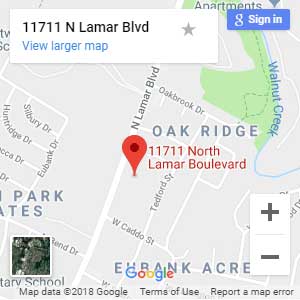
What Happens During Klonopin Withdrawal?
Klonopin detox provides gradual tapering for safe, comfortable withdrawal.
Table of contents
Klonopin withdrawal symptoms can be very uncomfortable, and in some cases, they can be life-threatening. If you’re addicted to Klonopin and thinking about getting help to stop using it, here’s what you can expect during medical detox.
Related post: How to Taper Off Klonopin Safely
What is Klonopin?
Klonopin is the brand name of the generic drug clonazepam. It’s a benzodiazepine that doctors prescribe to treat anxiety and insomnia. It works by enhancing the effects of gamma-aminobutyric acid (GABA), which is a brain chemical that makes you feel calm.
Doctors prescribe Klonopin for short-term treatment because it can cause dependence and withdrawal symptoms after a few weeks. Regardless of whether you take it exactly as prescribed by your doctor or use it recreationally to get high, if you use it for longer than a month, you’re likely to develop a dependence. As a result, you’ll experience withdrawal symptoms if you suddenly stop using it.1
Klonopin withdrawal symptoms
Klonopin withdrawal is very similar to alcohol withdrawal. If you’re dependent on Klonopin and want to quit, you can expect to experience symptoms like:2
- Nausea
- Vomiting
- Anxiety
- Sweating
- Irritability
- Increased body temperature
- Hallucinations
- Sleeplessness
- Tremors
- Panic attacks
- Loss of appetite
- Nightmares
- Depression
- Difficulty concentrating
- Suicidal thoughts
- Grand mal seizures
- Coma
During Klonopin withdrawal, many people also experience something called “rebound” anxiety and insomnia. Essentially, it’s the return of symptoms that Klonopin treated. However, these symptoms can be pretty intense for some people, and they may come on as soon as they start withdrawing from Klonopin. Rebound symptoms typically last a few days before they fade away, so it’s helpful to get professional treatment for Klonopin withdrawal.
Some people also experience something known as protracted withdrawal or post-acute withdrawal. The symptoms of this withdrawal syndrome often include lingering depression and anxiety and may last anywhere from several months to more than a year. However, not everyone who stops taking Klonopin experiences protracted withdrawal symptoms.
Unfortunately, no one can say exactly what you’ll experience during Klonopin withdrawal because it’s highly individualized. If you’re worried that Klonopin withdrawal might be severe or life-threatening for you, it’s always best to seek help from a detox center or a doctor.
How long does Klonopin withdrawal last?
According to World Health Organization research, Klonopin withdrawal can last anywhere from two to eight weeks.3 However, it varies from person to person.
Once Klonopin has fully left your body, you may start feeling the side effects of withdrawal. Klonopin has a long half-life of 30 to 40 hours, which is how long it takes your body to eliminate half of the dose.4
Generally, the duration and severity of your withdrawal symptoms depend on the following factors:
- How long you’ve been taking Klonopin
- How much Klonopin you use regularly
- If you’re taking Klonopin with other drugs or alcohol
- Your mental health and physical health history
Klonopin withdrawal timeline
When it’s all said and done, Klonopin withdrawal symptoms can last several months, but it varies from person to person. Here’s a general timeline of what you might experience during Klonopin withdrawal.
| 1 to 3 days after the last dose | The very first signs of withdrawal start to appear. Typically, this includes problems sleeping, anxiety, and mood swings. |
| 1 to 2 weeks after the last dose | Klonopin withdrawal symptoms tend to peak around this time, and anxiety is common. If you quit Klonopin cold turkey, you may also experience tremors, hallucinations, or seizures around this time. |
| 3 to 4 weeks after the last dose | By this point, the worst Klonopin withdrawal symptoms are usually over. However, you may still experience lingering anxiety or other psychological symptoms. |
| 2 months (or more) after the last dose | You might experience some symptoms of Klonopin withdrawal as long as three months after you initially quit. If you were severely addicted, you’re more likely to experience this. |
What is the best way to quit Klonopin?
Due to the risks associated with benzodiazepine withdrawal, it’s always best to get professional help to stop using Klonopin. If you ask your doctor for help or enroll in a medical detox program, you’re less likely to experience extremely severe Klonopin withdrawal symptoms if you receive medical treatment.
The first step to quitting Klonopin is completing a comprehensive assessment with your doctor or a team of detox professionals. This assessment will provide the necessary information to treat any Klonopin withdrawal symptoms you’re experiencing, as well as physical and mental health issues.
With medical treatment during Klonopin detox, a staff of doctors and nurses will gradually taper you off Klonopin under close medical supervision. A slow taper will help you avoid serious physical or psychological problems during withdrawal. Additionally, medical staff will continually monitor you and ensure that you remain as comfortable as possible by treating ongoing and new withdrawal symptoms.
In addition, some cognitive-behavioral treatment methods and peer support groups may help you cope with the discomfort of withdrawal. For example, at Briarwood Detox Center, we offer H&I meetings where detox clients can hear from other people in recovery and connect with potential 12-Step sponsors. We also provide specialized music and art activities to give clients access to expressive and therapeutic work and facilitate healing.
Completing detox and withdrawal is just the first step to quitting Klonopin. After you detox, you’ll need to continue with some form of addiction treatment to address the psychological aspects of your addiction. In treatment, you’ll learn how to make positive behavioral changes that will help you sustain your sobriety long-term.
Also, suppose the doctor or nurses feel that ongoing medication-assisted treatment (MAT) is a good fit for you. In that case, they may recommend a specific treatment regimen that you can continue as you progress to an addiction treatment program after detox.
Risks of quitting Klonopin cold turkey
Quitting Klonopin cold turkey is never recommended because it can potentially lead to life-threatening complications. Instead of quitting cold turkey, it’s best to seek professional medical help to detox from Klonopin. In doing so, you are less likely to experience severe Klonopin withdrawal symptoms like seizures and delirium.
Related post: Can Drug Withdrawal Cause Death?
Klonopin detox treatment
If you or a loved one is addicted to Klonopin, the caring professionals at Briarwood Detox Center are available to help. We provide individualized detox programs for benzodiazepines and all other addictive substances. Please call (512) 262-4426 or contact us online to start your recovery journey today.
References:
Break Free From Your Addiction Today
(in 3 easy, confidential steps)

Verify your insurance
Complete our fast, free, and easy verification process over the phone to determine the extent of your insurance coverage.

Make an informed decision
We will provide personalized placement recommendations based on your insurance, treatment needs, financial situation, and schedule.

Contact us
Call (888) 857-0557 or fill out our online form for a free and confidential personal consultation with an admissions specialist.







